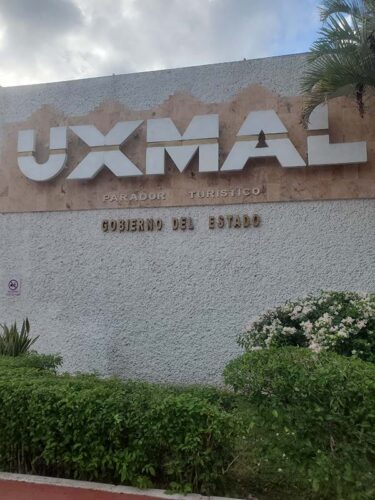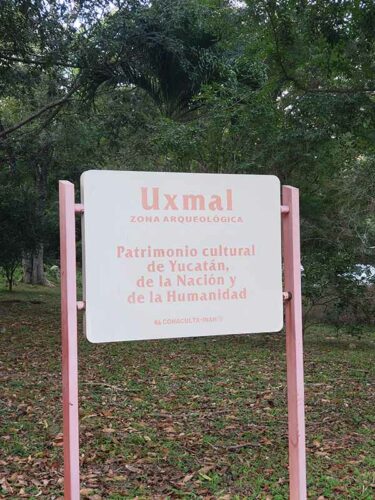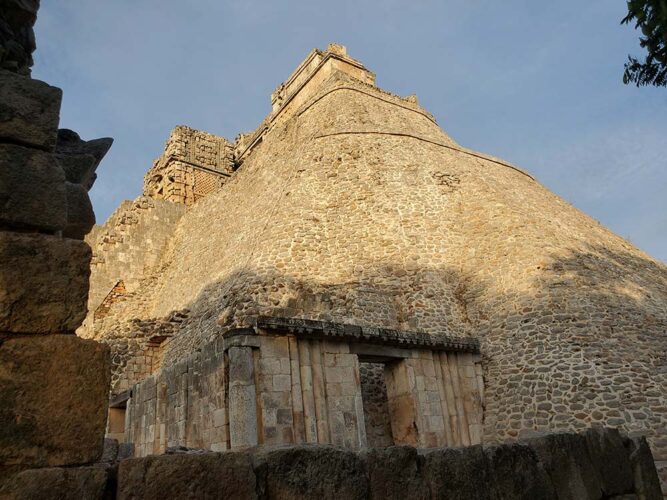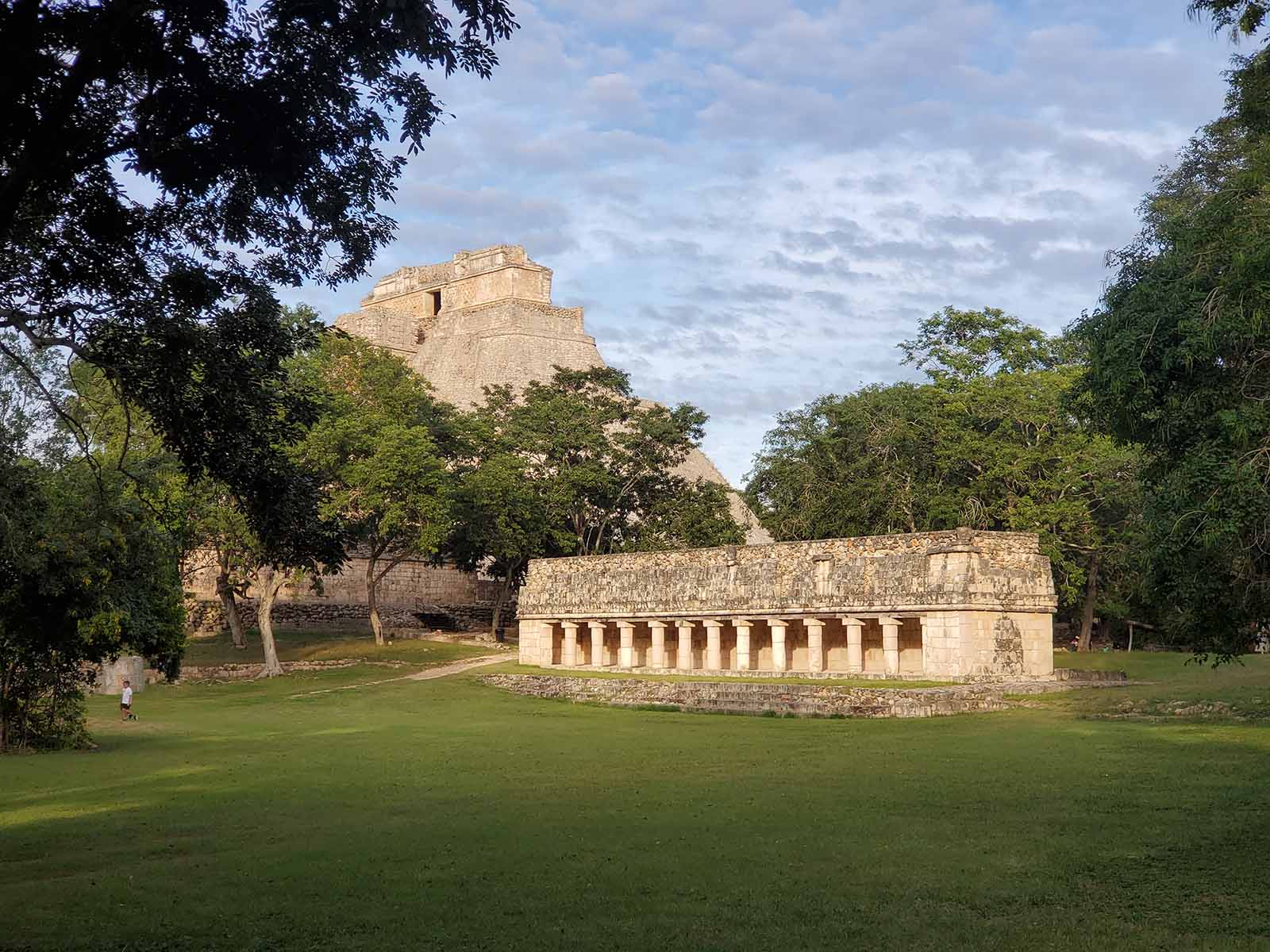
Uxmal Living Legacy
In the heart of the Yucatán Peninsula, where the sun paints the sky in hues of warmth and history breathes deeply across the land, Uxmal stands not merely as Mexican ruins but as an artistic canvas of the Maya civilization. Stepping into Uxmal isn’t just a journey into the past; it’s an immersive exploration of a culture’s artistic heartbeat that has transcended time.
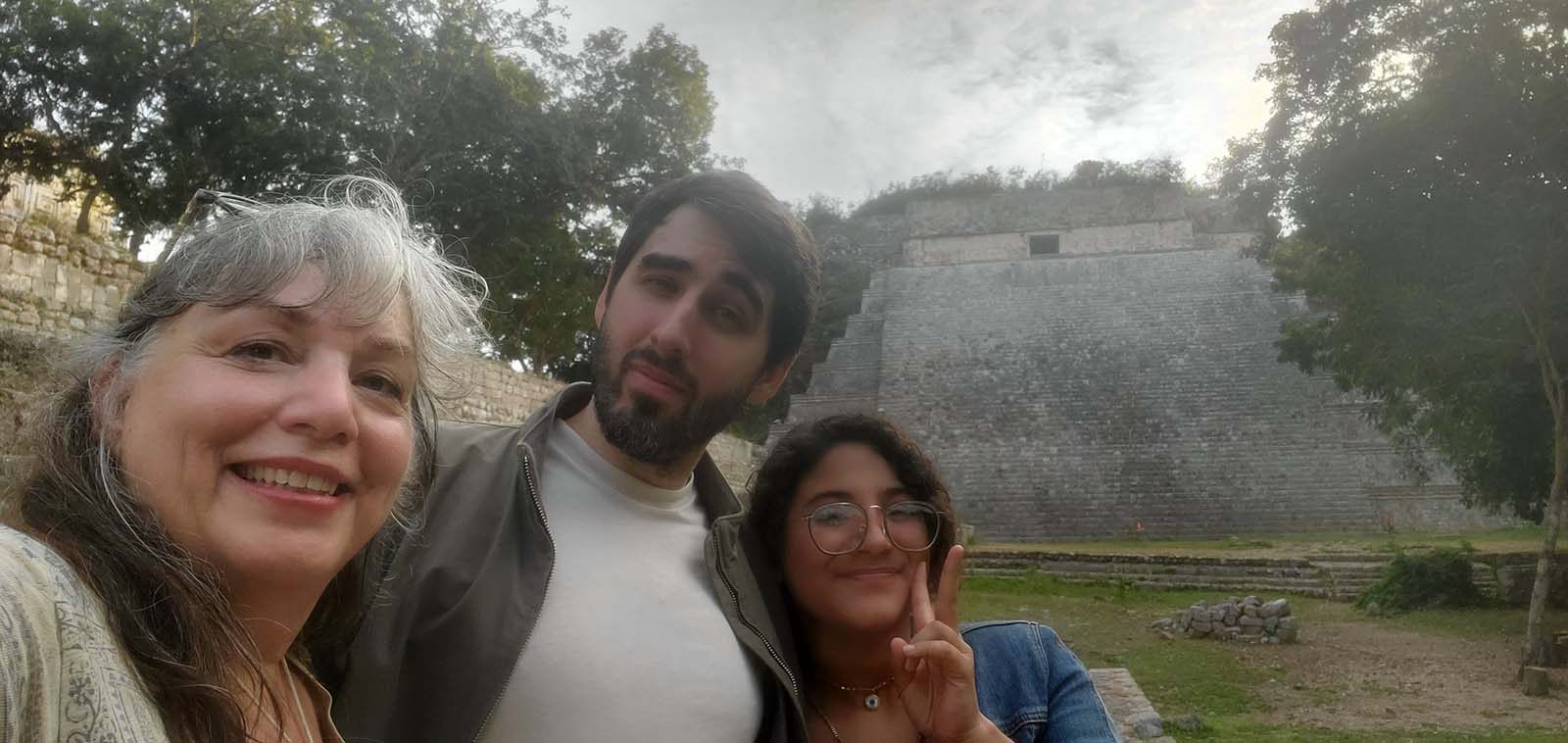
Unlocking the Name Uxmal
The name Uxmal, pronounced oosh-mahl, has been a whispered enigma through centuries. “Thrice built,” a conventional interpretation, hints at a history layered like the stones that grace its grounds. Yet, within the syllables of ‘ux,’ a Maya Yucatan term meaning harvest, suggests a narrative of the agricultural wealth of the Puuc region. The Puuc Region is a 7500 square km | 4660 square miles triangular in shape within the states of Yucatan and Campeche.
Living Puuc
Nestled in the Puuc region, Uxmal doesn’t merely boast ruins; it unveils the Puuc architectural style—smooth walls below, adorned friezes above. The entwined snakes and two-headed serpents breathe life into stone, narrating tales of Chaac, the rain god. Each column and trapezoidal shape tells a story of the Puuc tradition entwined with influences from the Nahua peoples, previously referred to as Aztecs.
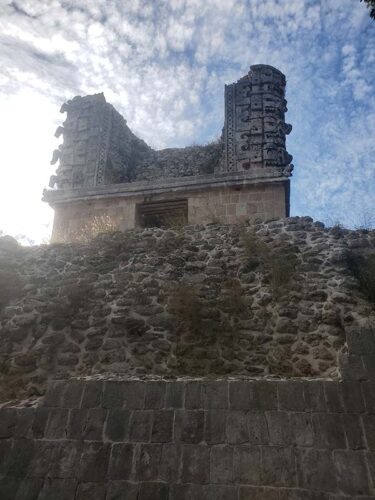
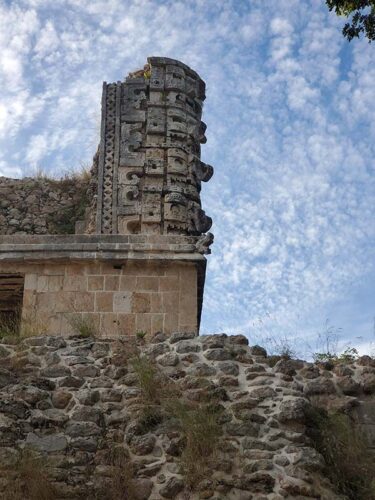
Uxmal Architectural Poetry
Uxmal architectural poetry isn’t a mere display of stones but an artistic conversation with gods and nature. The facades adorned with Chac masks and intricate friezes echo the importance of symbolism to a civilization in harmony with its surroundings. The Pyramid of the Fortune Teller, the Nuns’ Quadrangle, and the House of Pigeons aren’t just structures; they’re chapters in the story of Late Classic Maya life (600 to 900 AD).
Mythical Reverberation
Beyond the stones, Uxmal has developed many myths. The Pyramid of the Magician, standing tall at 130ft, whispers of a night’s creation, a myth later dispelled by archaeologists. The echo of a bird call, a gift from the past, continues to enchant visitors. Clap your hands in front of the structure to hear the bird respond.

Artistry Frozen in Time
Uxmal isn’t a static museum; it’s a canvas of Maya artwork. The Governor’s Palace, adorned with mosaics of serpents and celestial symbols, narrates tales of ancient gods. Climb these structures with your eyes, it isn’t just ascending steps; it’s a journey into the artistic soul of a civilization frozen in time.
More than Stones
Beyond Chichén Itzá’s grandeur, Uxmal offers an authentic experience. Pyramids, architectural splendor, and the resident iguanas paint a picture of a traveler’s haven. It’s not just Mexican ruins; it’s a living testament to a culture’s resilience and artistry.
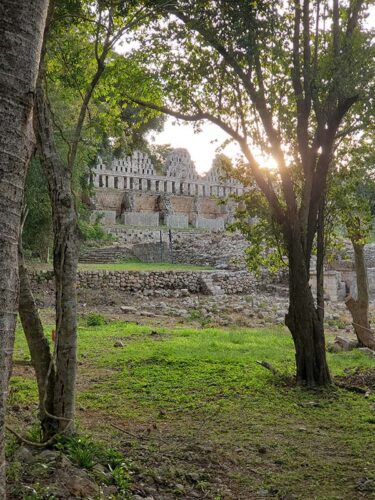
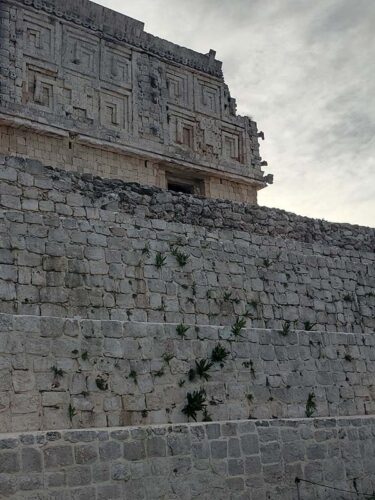

Mayan Ball Courts
Amidst the ancient stones of Uxmal, a unique facet of Maya civilization unveils itself on a ball court—a game echoing through thousands of years, known as Pok Ta Pok. As you stand aside the court, imagine the skill and prowess required by players who, with the grace of their hips, elbows, and knees, aimed to propel a ball into a concrete circular goal. It’s a mesmerizing thought, envisioning the athleticism and precision demanded by this ancient sport. One can’t help but wonder if Pok Ta Pok spawned the idea for J.K. Rowling’s Quidditch.
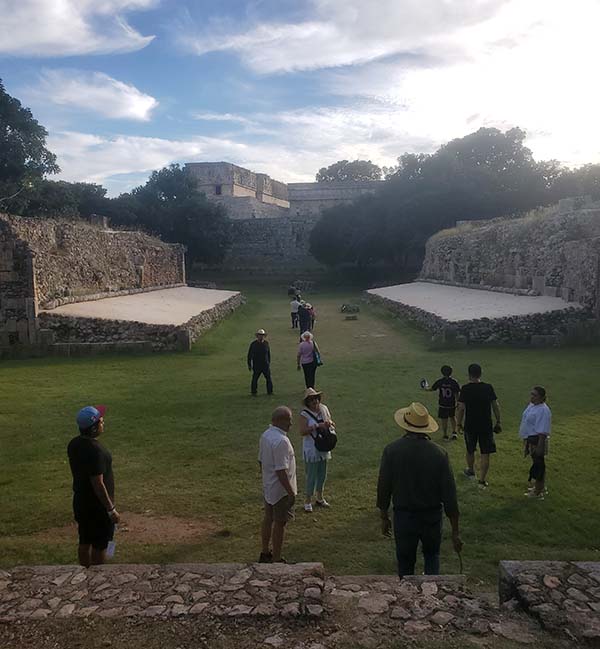
Yet, Pok Ta Pok is more than a physical exhibition. It, too, carries with it a shadow of mystery, a tale entwined with sacrifice. The outcome of the game, as various sources suggest, held profound consequences. Some speak of victors being offered as sacrifices, while others argue the fate befell the defeated. Intriguingly, some assert that neither claim holds true. The ambiguity shrouding Pok Ta Pok invites contemplation on the intersection of sport, spirituality, and the rites of an ancient civilization. Each bounce of the ball and every stroke of a player’s hip resonates with a history where victory and sacrifice danced in tandem.
Echoes of Mayan Life
Uxmal, settled around 500 BC, is a chronicle of Maya power. The Pyramid of the Magician, crafted in five stages, stands as a testament to Uxmal resilience. The Puuc architectural style, isn’t just an example of exceptional construction; it’s about the symbolism etched in stone.
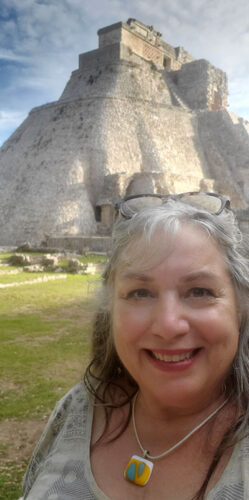
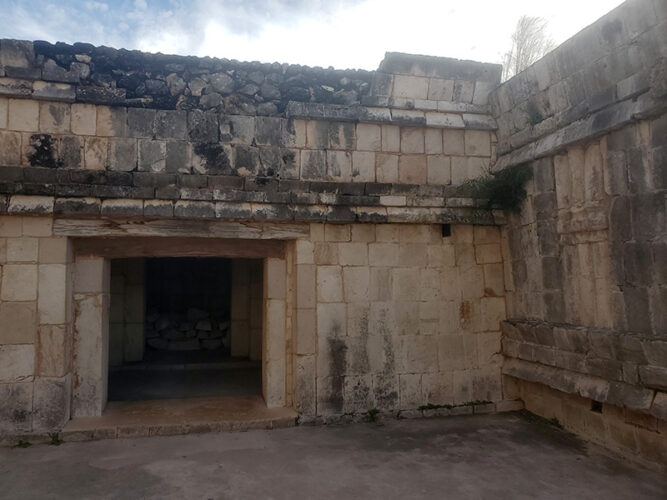
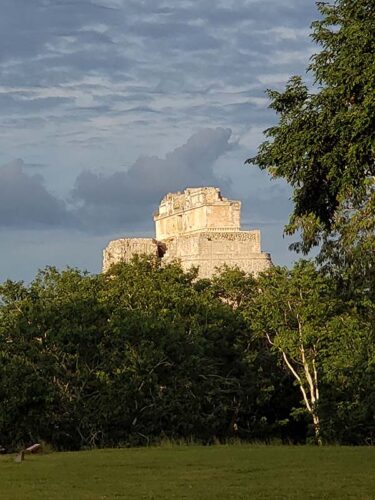
Getting to Uxmal
Are you ready to visit the ancient city of Uxmal? You’ll find it on the Yucatan Peninsula, 62 km or 38 miles south of Mérida. This UNESCO World Heritage Site, originally built along ancient roads known as sacbes, connected Uxmal to other Maya cities like Chichén Itzá, Caracol, Xunantunich, and Tikal. The sacbes fostered a network of cultural exchange among Mayans. Now you can follow in their footsteps via modern roads by rental car or tour bus.
As you arrive at Uxmal, expect an entrance fee of approximately $500 MXN or around $35 USD. There are two windows you must visit and two tickets you must buy; this is not explained well at the site. Your two investments offer you a journey through time plus continued restoration of these archeological gems. Uxmal isn’t frozen in a bygone era; it’s a story still being told. Beyond the popular sites, there are ongoing excavations, restorations, and whispers of history still waiting to be uncovered.
